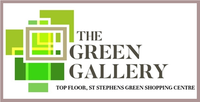About John Skelton
JOHN SKELTON (1925 Armagh- 2009 Dublin) started his professional career in London, where he came under influence of Euston Road School in the late 1940s.
In 1946 he married Caroline, settling four years later in Dublin. He worked initially in advertising as Art Director and illustrator of books, most of them educational. After 1975 he worked full-time as a painter. He had numerous one man shows in Dublin; two in Belfast, one in Los Angeles and one in the Mystic Seaport Museum in Connecticut.
Up to the late 1980s, John was frequent exhibitor in group shows, particularly the annual Royal Hibernian Academy and the Watercolour Society shows in Dublin. In recent years, however, his work was in such demand that he contributed to these less often. During the 1970s and earlier 1980s he earned a reputation as a gifted teacher and lecturer in the National College of Art and Design in Dublin.
Biography:
Born in Co. Armagh, Northern Ireland in 1925 John died in Dublin on November 21st 2009
Education
Queens University, Belfast, , Northern Ireland
Belfast College of Art, Belfast, Northern Ireland
St. Martins School of Art , London, United Kingdom
Selected Public Collections
ESB
Bank of Ireland
Embassy of Korea
Woodchester now GE Capital
The Legacy of John Skelton
Many of John Skelton’s figures can be read as elegiac: a solitary woman on a sofa, a bather staring listlessly after a swim, a farmer trekking home alone – all caught in a kind of monumental loneliness recalling the best of Edward Hopper, a long time Skelton hero. Even in his scenes of rural social life – the country fair, the shebeen – there is at times a somber note. It is caught in a child’s sad face; a farmer’s stooped back, a woman’s wistful stare.
Urgency, meanwhile, expresses itself in pure paint: rhythmic brushstrokes, fields of bright, near-primary colour and other formal experiments.
Like many painters, Skelton was superstitious about coming to the canvas armed with anything other than brushes and paint. Yet he was frank about the sense of loss and said:
“The world I see around me is not my world any more. It’s not the world I grew up in. As you grow old, change makes you sad.”
As the Irish landscape was transformed during his lifetime, the millennial Skelton was freed, as never before, from pictorial or documentary burdens. This was emphasized by a remarkable spontaneity in the handling of paint: wider brushstrokes, brighter colours.
Nostalgia ceased to be respectable in contemporary painting, yet Tracey Emin could show the wooden beach hut of her Brighton childhood to great general acclaim; while Damien Hirst could devote an entire series of vitrines to the themes of death and decay without being accused of sentimentality.
The new Ireland of John Skelton's latter life, if anything, reinforced and re-energized these themes of sadness and loss. In the atmosphere of noise and youth, it became a point of honour for Skelton to mourn the passing of another world.
It was quite clear from our conversations that the artist had no personal nostalgia for the hungry Ireland of the 1940s and 1950s. It was not the fearsome struggle of his farmers and fishermen that he venerated. What he valued, on the contrary, were those qualities which made them equal to the challenge.
Skelton possessed those qualities himself: stubbornness, physical and emotional toughness, a sensitivity to the sacredness of ordinary.
No doubt those qualities will survive in the Irish character. But a Skelton painting will always containthem. He sent his brush out in search of the ordinary, and it came back loaded with images of the transcendent and the sublime.
In John's own words:
"From a very early age, when I could recognize the need to draw and paint, I determined to achieve skills which would bring me beyond the difficulties of technique. This would allow me to perform and improvise in my paintings like a good jazz musician.
I felt that a painting was not just a mirror image of the world, but existed parallel to it – working in somewhat the same way as a biblical parable. I discovered that pictorial energy was the result of the tension of image in opposition: in a landscape, for example, the counterpoint between the rhythm of stormy skies and solid undulating earth. These things become visible only when you look for them. When you do, you find they surrender up a painting without effort. That, I feel, is secret. Painting is visible music and can only work when, as the poet Patrick Kavanagh put it,”… you wait in the unconscious room of the heart for god to find you”.
I was drawn to paint certain subjects again and again, as you can clearly see in this exhibition: big endless theatre of the seasons. In recent years I have devoted more time to portraits, almost all of these made under the impartial embrace of natural light.
I’m eternally thankful to have been given the means and desire, to record this treasure house of a world. I am more interested in single moments than in stories; my aim is to set down a vision, without a narrative to convey or an axe to grind. In this way I hope to convey a sense of the world which, while deeply personal, will also be recognized and understood."
The artist lived in Dublin with his wife, Caroline, and they had three sons, Paul, John Francis (also a painter) and Michael a Graphic/Web designer.
John passed away, peacefully, on the 21st of November 2009. Aged 85 years and was laid to rest in Mount Jerome Cemetery, Harold's Cross, Dublin, Ireland
His wife Caroline(Chris) nee Robinson has since passed away, peacefully, on the 5th of May 2013.Aged 88 years and was buried, together with John, in Mount Jerome Cemetery.
May their memories live on in our hearts.

